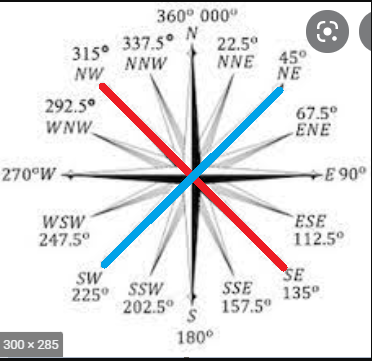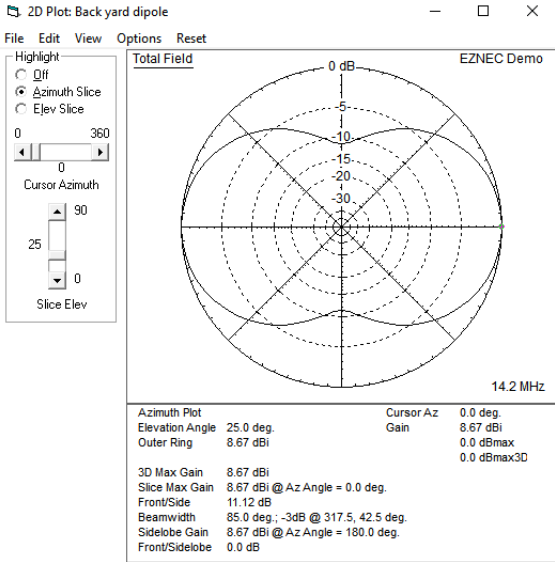Directional Antenna Systems!
8 position remote coax switch box controller. Where do you want to go today?!
With the exception of omnidirectional verticals, just about all antennas are directional. What we are referring to here is not just an antenna that radiates in one or more particular directions, but the ability to actively and usefully control the direction we want our antennas to radiate from our shacks at any given moment.
As detailed on the home page, a beam on a rotor is an excellent solution, but it's not the only one. Here is how I'm accomplishing that with stationary loops and dipoles at my station!
Dipoles and Loops - Select and Go!
I've already detailed the Dipoles and Loops I'm using at my station. Both loops and dipoles radiate broadside to the antenna and have nulls off the ends, so we want to orient the antenna for maximum gain in the direction(s) we want to work, by aiming them appropriately.
I built the loops first. From here in Maryland, the sensible direction to orient them for maximum gain and good DX is northeast and southwest. That not only nicely covers the entire east coast, it is perfect for European DX too! The problem is, that left stations in the northwest and southeast in the null part of the pattern. I could still work them, but they were down a good bit.
To fill in the nulls, I built dipole Vs and oriented them 90 degrees from the loops, so that they would radiate northwest and southeast. It is a very big enhancement for the station! Stations exactly north, south, east or west (at 45 degrees from either antenna) don't show much difference with either antenna selected, but it makes a very big difference for stations broadside to the selected antenna! Some stations might only change one or two S units, but others literally go from S2 to S9!
This video gives you a sense of how, with some stations it doesn't matter much, but with others it can be quite dramatic:
Along with my hex beam, I am currently running two sets of fan dipoles, for quick direction changes, when it is unnecessary to take the time to turn the beam.

Red dipole set radiates broadside NE / SW
Blue dipole set radiates broadside NW / SE
From here in Maryland, it really matters for us, as SE is great for the Caribbean, but the Caribbean and parts of South America are right off the end (null) of the NE dipole for Europe (and vice versa). A flick of the antenna switch and I am instantly on the direction I want. For me:
NE = Europe and Northeast US
NW = Hawaii, Alaska, Japan, Australia and Northwest US
SE = SA, Caribbean
SW = SW US & Mexico
Here is an EZNEC top down view of a standard, 20 meter dipole at 42 feet. Note that off the ends you are more than 10 dB down from the broadside area:

Look how significant the portion of the coverage area is at least 5 dB down from the major lobes. When you are a little off EU and down 5 dB or more, competing against all those other callers and not getting through, it explains a lot.
By the way, you can display bearing as compass points in all our software with Ctrl + Shift + C. I run that way since it is much easier to know which antenna set to select without having to compute the bearing in my head in the heat of the contest.
Conclusion:
With two sets of antennas and an antenna switch box, it is a simple matter to create a directional antenna system using stationary wire antennas that is a huge enhancement over each, individual set of antennas. This can be accomplished for a tiny fraction of the cost of a beam, tower and rotor. A beam is the best solution in terms of concentrating all your gain in one direction and controlling it precisely, but the selectable antenna approach works very well too. In addition to being easier and less expensive, is a stealthy, neighborhood friendly solution. Changing directions is lightning fast as well!
Two important safety tips and a disclaimer: First, contact with overhead power lines can kill you! Always be mindful of the location of your power lines, your ladders, handling antennas, other metallic objects, etc. Second, you should always evaluate the placement of your antennas and address any RF exposure risks as detailed here. Any actions that you take based upon the information presented here shall be solely at your own risk. Neither N3FJP Software, our employees or any of our contributors shall be held liable for any actions taken based upon the information presented on this website.
![]()
Copyright 1997-2021, N3FJP Software - Affirmatech, Inc
